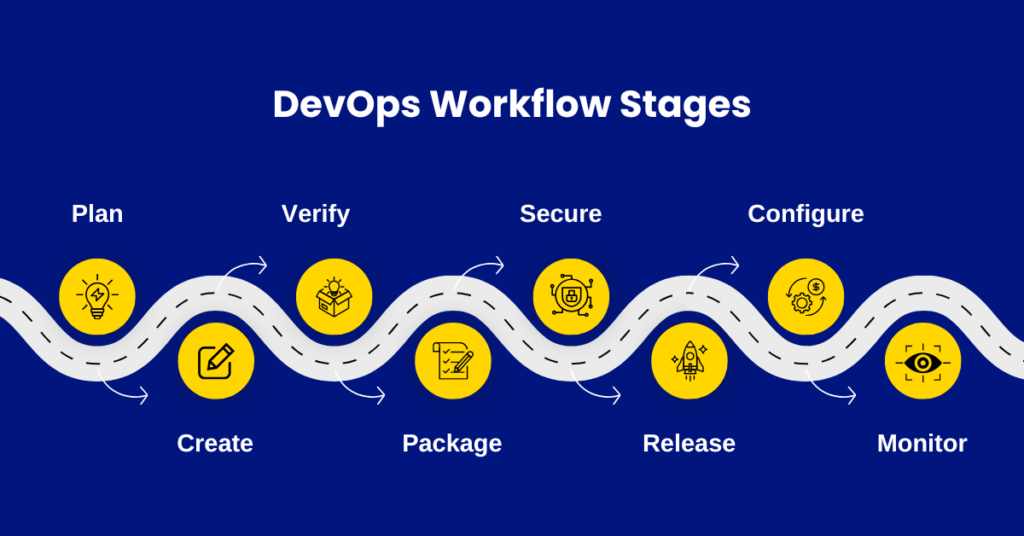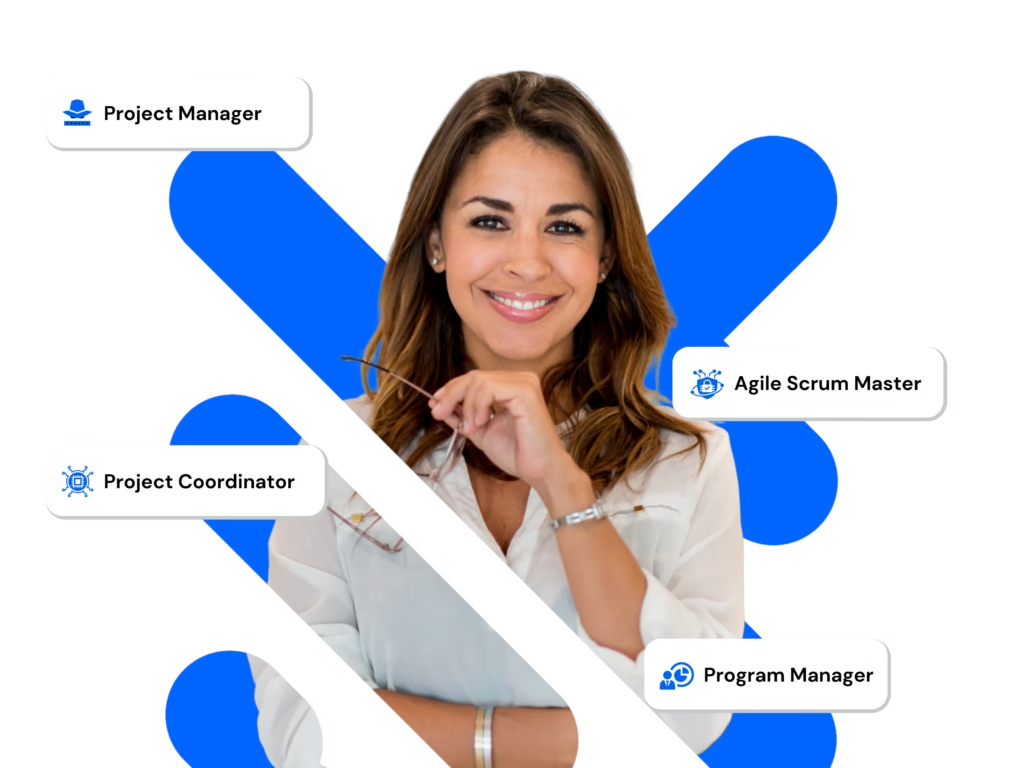Table of Contents
Introduction
what is DevOps: DevOps association’s development (Dev) and operations (Ops) to excel the effectiveness, hustle, and safety of software growth and delivery matched to modern procedures. A more quick software development growth effects in a modest benefit for businesses and their client.
DevOps can be best clarified as people working composed to consider, build and provide safe software at top speed. DevOps performs allow software development (dev) and operations (ops) crews to hurry conveyance over iterative improvement automation, fast feedback and collaboration. Stopping from an agile method to software development, a DevOps procedure enlarges on the cross-efficient method of constructing and delivery requests in a quicker and more iterative way.
In accepting a DevOps development procedure, you are building a choice to increase the flow and value conveyance of your request by inspiring a more cooperative situation at all phases of the development series. DevOps denotes a change in mindset for IT culture. In construction on top of Agile, systems theory and lean practices, DevOps centers on incremental growth and quick conveyance of software. Success relies on the aptitude to make a culture of responsibility, joint responsibility for business outcomes, empathy and improved collaboration.
DevOps methodology
The DevOps methodology targets to reduce the systems growth lifecycle and deliver nonstop provision with great software worth. It highlights rapid feedback cycles, integration collaboration and automation. These features assist to confirm a culture of releasing software, testing and building that is more dependable and at a great rapidity.
This methodology encompasses four key values that director the efficiency and competence of request growth and deployment. These values, registered underneath, center on the best features of modern software development.
Core DevOps Principles

Automating the Software Development Lifecycle
DevOps emphasizes automation across all stages of software development, including testing, builds, releases, and provisioning of development environments. Automating repetitive tasks reduces human error and accelerates software delivery.
Enhancing Collaboration and Communication
While automation is essential, effective teamwork is equally important. Strong collaboration and seamless communication between development and operations teams foster a more efficient and productive DevOps environment.
Continuous Improvement and Waste Reduction
High-performing DevOps teams consistently evaluate processes to identify inefficiencies. By automating routine tasks and analyzing performance metrics, they work to shorten release cycles and improve system recovery times.
User-Centric Approach with Fast Feedback Loops
DevOps enables teams to focus on user needs by leveraging automation, improved collaboration, and continuous refinement. Short feedback loops ensure that user expectations are met quickly and effectively.
By integrating these principles, organizations can enhance code quality, accelerate product delivery, and optimize application development strategies.
Benefits of a DevOps culture
The commercial value of DevOps and the profits of a DevOps culture lie in the capability to recover the manufacture atmosphere in instruction to provide software quicker with nonstop enhancement. You need the aptitude to antedate and react to industry disruptors without postpone. This becomes probable within an agile software growth procedure where crews are permitted to be independent and bring quicker, decreasing work in progress. Once this happens, crews are clever to react to demands at the hustle of the market.
Key Benefits of DevOps
Embracing a DevOps culture offers significant advantages, including improved efficiency, faster features deployment, and enhanced product quality. Some of the key benefits include:
Seamless Collaboration: By eliminating barriers between development and operations teams, DevOps fosters better communication and teamwork, leading to a more unified workflow.
Optimized Efficiency: Automating various stages of the software development lifecycle reduces manual effort, minimizes errors, and speeds up project completion.
Continuous Improvement: DevOps promotes an on-going feedback loop, enabling teams to make rapid adjustments and ensure software aligns with user expectations.
Superior Quality and Security: Practices like continuous integration and delivery (CI/CD), along with proactive security measures, help maintain high software quality while mitigating risks.
Accelerated Market Delivery: Streamlined processes and improved coordination enable organizations to shorten the time from development to deployment, gaining a competitive advantage in dynamic industries.
What is the goal of DevOps?

DevOps denotes an alteration in mindset for IT culture. In structure on top of Agile performs DevOps emphases on incremental growth and quick distribution of software. Achievement relies on the capability to make a culture of responsibility, enriched partnership, understanding, and combined accountability for industry results.
Accepting a DevOps plan allows industries to reduce security and compliance risk, deliver better products faster and raise operational efficiencies.
Benefits of DevOps
Accepting DevOps breaks down barricades so that growth and processes crews are no longer siloed and have a more proficient way to work through the whole growth and request workflow. Without DevOps, administrations often experience handoff resistance, which postpone the provision of software releases and negatively influences business outcomes. The DevOps model is an administration’s response to growing working effectiveness, hurrying provision, and inventing products. Administrations that have applied a DevOps culture knowledge the profits of improved cooperation, fluid approachability, and littler cycle times.
Collaboration
Implementing a DevOps model makes arrangement among growth and processes crews; handoff friction is decreased and everybody is all in on the similar aims and aims.
Fluid responsiveness
More collaboration indications to real-time response and better competence; changes and developments can be applied faster and guesswork is detached.
Shorter cycle time
Better competence and normal communiqué among teams shortens cycle time; new code can be freed more quickly while preserving worth and safety.
DevOps Workflow Stages

The DevOps lifecycle Extends from the start of software growth over delivery, maintenance, and safety. The phases of the DevOps lifecycle are:
Plan: Define project goals, outline tasks, set priorities, and establish a roadmap for execution. Use agile methodologies and project management tools to track progress and ensure alignment with business objectives.
Create: Develop, design, and write code collaboratively while maintaining secure coding practices. Leverage version control systems like Git to manage source code, facilitate peer reviews, and ensure seamless teamwork.
Verify: Conduct rigorous testing to confirm code functionality and quality. Automated testing, including unit tests, integration tests, and regression tests, helps identify and resolve issues early in the development cycle.
Package: Bundle applications along with their dependencies for deployment. Utilize containerization tools like Docker or Kubernetes to create portable, consistent, and scalable application environments.
Secure: Integrate security checks throughout the development pipeline. Perform static and dynamic analysis, dependency scanning, and fuzz testing to identify and mitigate vulnerabilities before deployment.
Release: Deploy software efficiently to end users with minimal downtime. Continuous deployment and release automation ensure that updates are delivered reliably and swiftly across different environments.
Configure: Manage and maintain the necessary infrastructure to support applications. Implement Infrastructure as Code (IaC) using tools like Terraform or Ansible to automate environment setup and ensure consistency.
Monitor: Continuously track application performance, system health, and security metrics. Use monitoring tools like Prometheus or ELK Stack to detect anomalies, optimize resources, and minimize downtime.
Govern: Establish policies for security, compliance, and access management across the organization. Implement auditing and reporting mechanisms to ensure adherence to industry regulations and best practices.
Courses
Popular DevOps Courses to Boost Your Career
If you’re looking to master DevOps and advance your career, enroll in our expert-led courses at Sense Academy and get hands-on training with industry-leading tools and practices
1. Beginner-Level DevOps Courses
- DevOps Fundamentals – Covers the basics of DevOps principles, culture, and tools.
- Linux for DevOps – Teaches Linux fundamentals, which are essential for DevOps engineers.
- Git & GitHub Basics – Learn version control and collaboration with Git and GitHub.
2. Intermediate-Level DevOps Courses
- Docker and Kubernetes – Covers containerization with Docker and orchestration using Kubernetes.
- Jenkins for CI/CD – Learn how to automate software deployment using Jenkins.
- Ansible for Configuration Management – Teaches infrastructure automation using Ansible.
3. Advanced DevOps Courses
- AWS DevOps Engineer – Focuses on DevOps practices using AWS cloud services.
- Azure DevOps Engineer (AZ-400) – Learn DevOps implementation using Microsoft Azure.
- Google Cloud DevOps Engineer (GCP-ACE) – Covers DevOps practices in Google Cloud.
- Terraform for Infrastructure as Code (IaC) – Learn how to automate infrastructure provisioning.
4. Certification-Based DevOps Courses
- AWS Certified DevOps Engineer – Professional
- Microsoft Certified: DevOps Engineer Expert (AZ-400)
- Docker Certified Associate (DCA)
- Certified Kubernetes Administrator (CKA)
- Certified Jenkins Engineer (CJE)
How does DevSecOps relate to DevOps?
Safety has become an essential part of the software development workflow, with much of the safety shifting gone in the growth procedure. DevSecOps confirms that DevOps crews comprehend the safety and obedience necessities from the very start of request formation and can correctly defend the honesty of the software.
By assimilating safety flawlessly into DevOps workflows, administrations increase the visibility and controller essential to see complex safety demands, counting vulnerability reporting and checking. Safety crews can confirm that rules are being imposed through development and deployment, counting dangerous testing stages.
DevSecOps can be applied crossways a collection of environments such as hybrid on-premises, cloud-native, and ensuring maximum controller over the entire software development workflow.
What is a DevOps engineer?
A DevOps engineer is blamable for all features of the software growth lifecycle, counting Conveying dangerous data to the industry and clients. Following to DevOps methodologies and values, they professionally assimilate development procedures into workflows, present automation where probable, and test and analyze code. They update tools and platforms (including IT infrastructure if necessary), deploy, evaluate and build. DevOps engineers manage releases, as well as detect and assist resolve technical problems for software consumers.
DevOps engineers need skill of a variety of programming languages and a robust set of communiqué abilities to be clever to cooperate amongst engineering and business groups.
DevOps tools, concepts and fundamentals
DevOps covers an extensive array of performs through the request workflow. Teams often start with one or more of these practices in their journey to DevOps achievement.
| Topic | Description |
|---|---|
| Version Control | A crucial process for tracking and managing modifications to source code and project files. It ensures systematic organization, collaboration, and rollback capabilities in software development. |
| Agile | A development methodology that emphasizes iterative, incremental progress, fostering adaptability and efficiency in project execution. Agile encourages collaboration and rapid response to changes. |
| Continuous Integration (CI) | A development practice where code changes are frequently merged into a central repository, followed by automated testing and build processes to maintain code integrity. |
| Continuous Delivery (CD) | Works alongside Continuous Integration to automate infrastructure provisioning and streamline application releases, ensuring smooth and consistent software deployment. Together, they form the CI/CD pipeline. |
| Shift Left | A strategy that incorporates security and testing early in the development lifecycle, improving code quality and accelerating project timelines by detecting issues sooner. |
Explore More: How to Prepare for AWS SAP on AWS Certification
FAQ
What are the key benefits of DevOps?
DevOps improves software quality, accelerates deployment, enhances collaboration, automates processes, and reduces system failures, leading to increased efficiency and reliability.
How is DevOps different from traditional IT operations?
Unlike traditional IT operations, which involve separate teams for development and operations, DevOps fosters collaboration, continuous integration, and automation, reducing delays and improving software delivery speed.
What are the essential tools used in DevOps?
Popular DevOps tools include Git (version control), Jenkins (CI/CD automation), Docker (containerization), Kubernetes (orchestration), Ansible (configuration management), and Terraform (infrastructure as code)
Is DevOps suitable for all types of businesses?
Yes, DevOps can benefit startups, enterprises, and even non-tech businesses by streamlining development, improving scalability, and enhancing operational efficiency across various industries.





